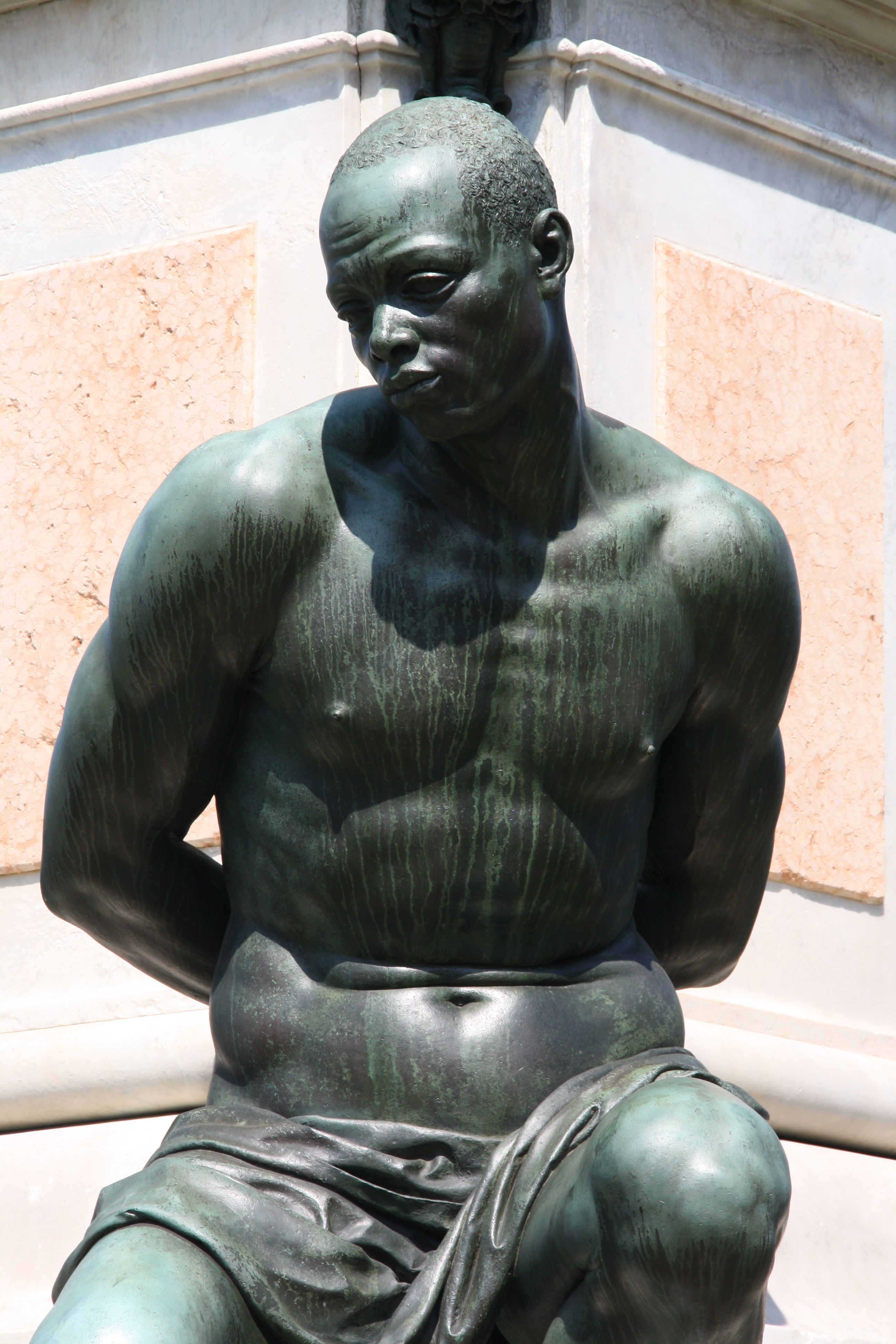Monument of the Four Moors on:
[Wikipedia]
[Google]
[Amazon]
 The Monument of the Four Moors () is located in Livorno, Italy. It was completed in 1626 to commemorate the victories of
The Monument of the Four Moors () is located in Livorno, Italy. It was completed in 1626 to commemorate the victories of
 The monument of the four Moors influenced sculptural design for several decades. A fountain in Marino features four statues of similarly chained prisoners, two of whom possess black African characteristics. The structure was constructed between 1632–1642 to commemorate
The monument of the four Moors influenced sculptural design for several decades. A fountain in Marino features four statues of similarly chained prisoners, two of whom possess black African characteristics. The structure was constructed between 1632–1642 to commemorate
 The Monument of the Four Moors () is located in Livorno, Italy. It was completed in 1626 to commemorate the victories of
The Monument of the Four Moors () is located in Livorno, Italy. It was completed in 1626 to commemorate the victories of Ferdinand I of Tuscany
Ferdinando I de' Medici, Grand Duke of Tuscany (30 July 1549 – 3 February 1609) was Grand Duke of Tuscany from 1587 to 1609, having succeeded his older brother Francesco I.
Early life
Ferdinando was the fifth son (the third surviving at ...
over the Ottomans.
It is the most famous monument of Livorno and is located in Piazza Micheli. Created by Pietro Tacca
Pietro Tacca (16 September 1577 – 26 October 1640) was an Italian sculptor, who was the chief pupil and follower of Giambologna. Tacca began in a Mannerist style and worked in the Baroque style during his maturity.
Biography
Born in Ca ...
, the monument takes its name from the four bronze statues of " Moorish" slaves that are found at the base of an earlier work consisting of the statue of Ferdinando I and its monumental pedestal.
History
In 1617, Cosimo II contracted sculptorPietro Tacca
Pietro Tacca (16 September 1577 – 26 October 1640) was an Italian sculptor, who was the chief pupil and follower of Giambologna. Tacca began in a Mannerist style and worked in the Baroque style during his maturity.
Biography
Born in Ca ...
to create the monument to commemorate his father, Ferdinando I. The completed monument was installed in Livorno in 1626. It features four bronze statues of enslaved prisoners chained at the base of a statue of Ferdinando I which had been commissioned at an earlier date. The physical characteristics of three of the statues represent people of the southern Mediterranean coast
The Mediterranean Sea is a sea connected to the Atlantic Ocean, surrounded by the Mediterranean Basin and almost completely enclosed by land: on the north by Western and Southern Europe and Anatolia, on the south by North Africa, and on the eas ...
while the fourth statue has characteristics of a black African.
Although the four chained prisoners are meant to represent the victories of Ferdinando I over the Ottomans, some scholars have posited different interpretations due to the presence of the statue with the black African characteristics.
The four Moors symbolise the four corners of the world
Several cosmological and mythological systems portray four corners of the world or four quarters of the world corresponding approximately to the four points of the compass (or the two solstices and two equinoxes). At the center may lie a sacr ...
. Tacca's design of the Moors monument is assumed to have been influenced by three columns in the shape of African men supporting a balcony in Via Carriona in Carrara
Carrara ( , ; , ) is a city and ''comune'' in Tuscany, in central Italy, of the province of Massa and Carrara, and notable for the white or blue-grey marble quarried there. It is on the Carrione River, some west-northwest of Florence. Its mot ...
. The three sculptures are depicted as suffering from the weight they bear supporting the iron structure.
Influence
Marcantonio Colonna
Marcantonio II Colonna (sometimes spelled Marc'Antonio; 1535 – August 1, 1584), Duke of Tagliacozzo and Duke and Prince of Paliano, was a Roman aristocrat who served as a Viceroy of Sicily in the service of the Spanish Crown, Spanish gener ...
's participation in the battle of Lepanto in 1571 which led to the defeat of the Ottomans.
The monument of the four Moors also influenced Bernini's creation of the '' Fountain of the Four Rivers'' (''Fontana dei Quattro Fiumi''). Bernini may have also been influenced by the Marino monument in his design of the Fountain.
The ostentatious design of the tomb of Doge
A doge ( , ; plural dogi or doges) was an elected lord and head of state in several Italian city-states, notably Venice and Genoa, during the medieval and renaissance periods. Such states are referred to as " crowned republics".
Etymology
The ...
Giovanni Pesaro, which was built in 1669 in Venice, and is found in Santa Maria Gloriosa dei Frari
The Basilica di Santa Maria Gloriosa dei Frari, usually just called the Frari, is a church located in the Campo dei Frari at the heart of the San Polo district of Venice, Italy. The largest church in the city, it has the status of a minor basil ...
close to the Pesaro Altarpiece, was perhaps strongly influenced by Tacca's monument of the four Moors.
See also
*Louis XIV Victory Monument
The Louis XIV Victory Monument was an elaborate trophy memorial celebrating the military and domestic successes of the early decades of Louis XIV's personal rule, primarily those during the Franco-Dutch War of 1672-1678, on the Place des Victoire ...
References
External links
* {{coord, 43.5495, N, 10.3048, E, source:wikidata, display=title History of Tuscany Monuments and memorials in Tuscany Buildings and structures in Livorno Buildings and structures completed in 1626 1620s sculptures 1626 establishments in Europe History of slavery Slavery in Spain